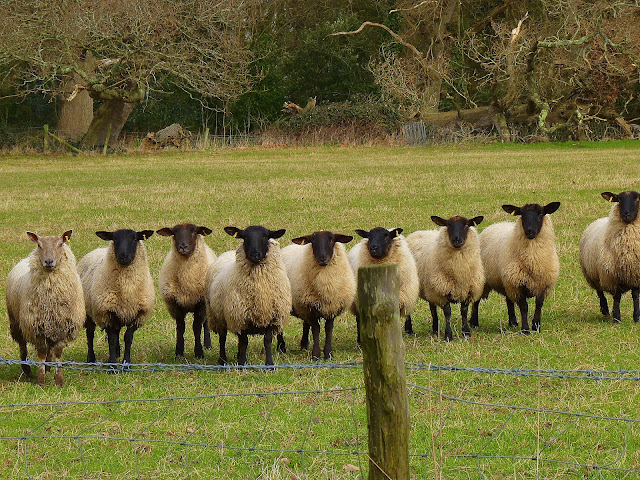Nineteen members of the West Church walking group enjoyed the day out starting our walk at Drum Bridge and stopping for lunch at Hilden Brewery before we came back to our cars.
 |
| Hilden Brewery |
There were 3 bird watchers among our group and we were all keeping our eyes peeled for the Kingfisher. Unfortunately today, it refused to make an appearance. However we did see 18 Redwing in a tree and there were probably a lot more in the stubble field where the tree was overlooking. This is not a very good photo as the birds were quite a distance away.
 |
| Redwing |
The only ducks we saw were Mallard but there were quite a few Moorhen with 2 Coot.
 |
| Coot |
At Drum Bridge we saw 2 Grey Wagtail although this photo was taken from a distance.
 |
| Grey Wagtail |
Although buds on trees were trying to emerge, we didn't see any primroses. The next photo is of a bridge we saw as we passed by.
I was the only one of the group that was fortunate to see a Tree Creeper. We saw all of the 4 Tits, Chaffinch, Blackbird, Song Thrush, Wren, Robin, Sparrow, Cormorant, Black-headed Gulls, and as we were arriving into Hilden we observed a Buzzard being mobbed by a Hooded Crow. There were also the usual, Wood Pigeon, Magpie, Rook and Jackdaw.
Several of our group saw a Grey Seal which is very unusual in the river as it would have had to cross a Weir to arrive where they saw it. Billy Burrows had his camera at the ready and has given me permission to include his photo of the Seal in my blog.
 |
| Grey Seal |
When I arrived back to Bangor, I drove round by Seacliffe Road and saw a Grey Heron, Redshank, Oystercatcher, Common, B.headed and Herring Gulls, Eider, and Black Guillemot before reaching home to be greater by my resident Collared Doves. All in all, a great day in good company.

















































